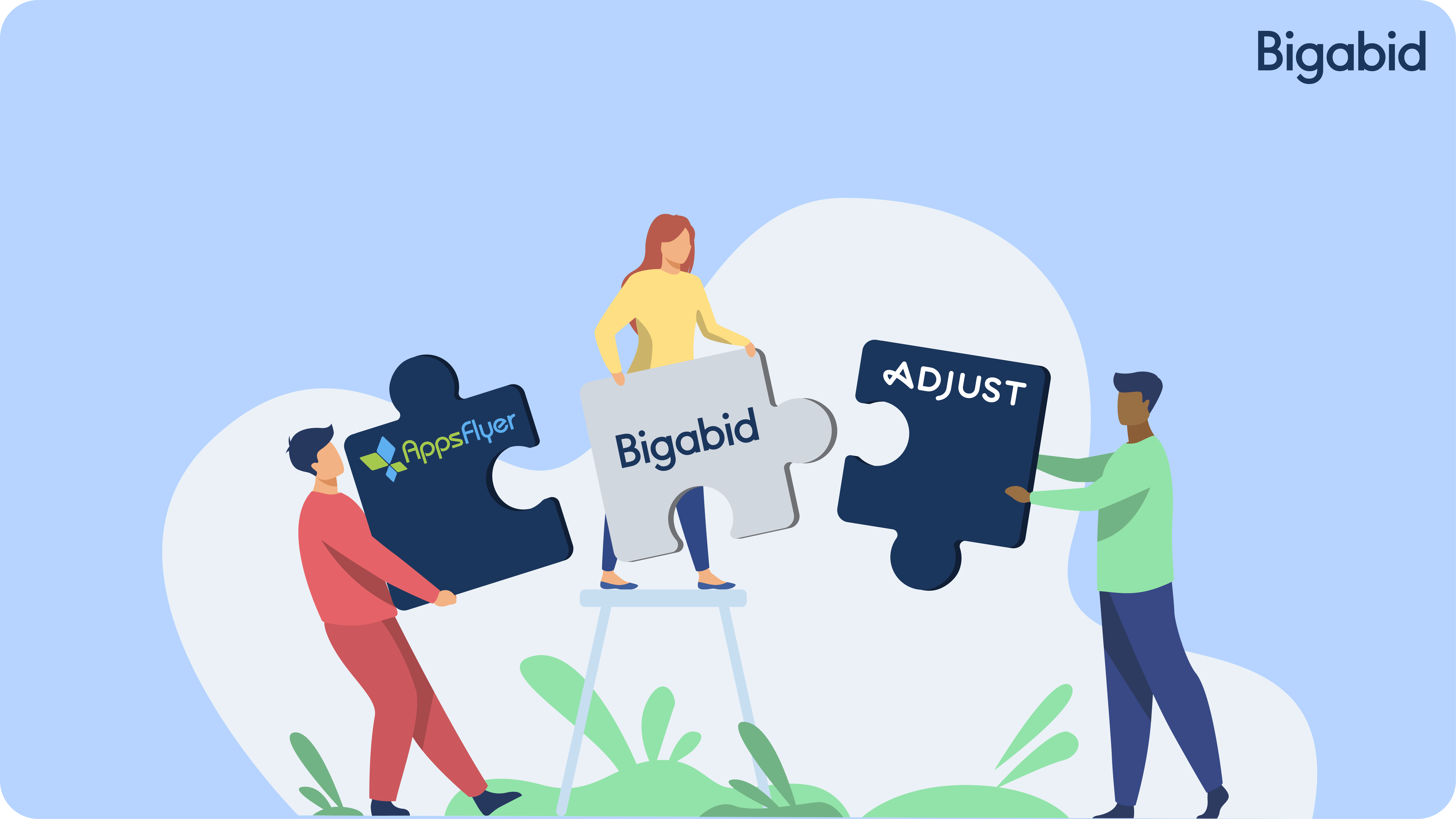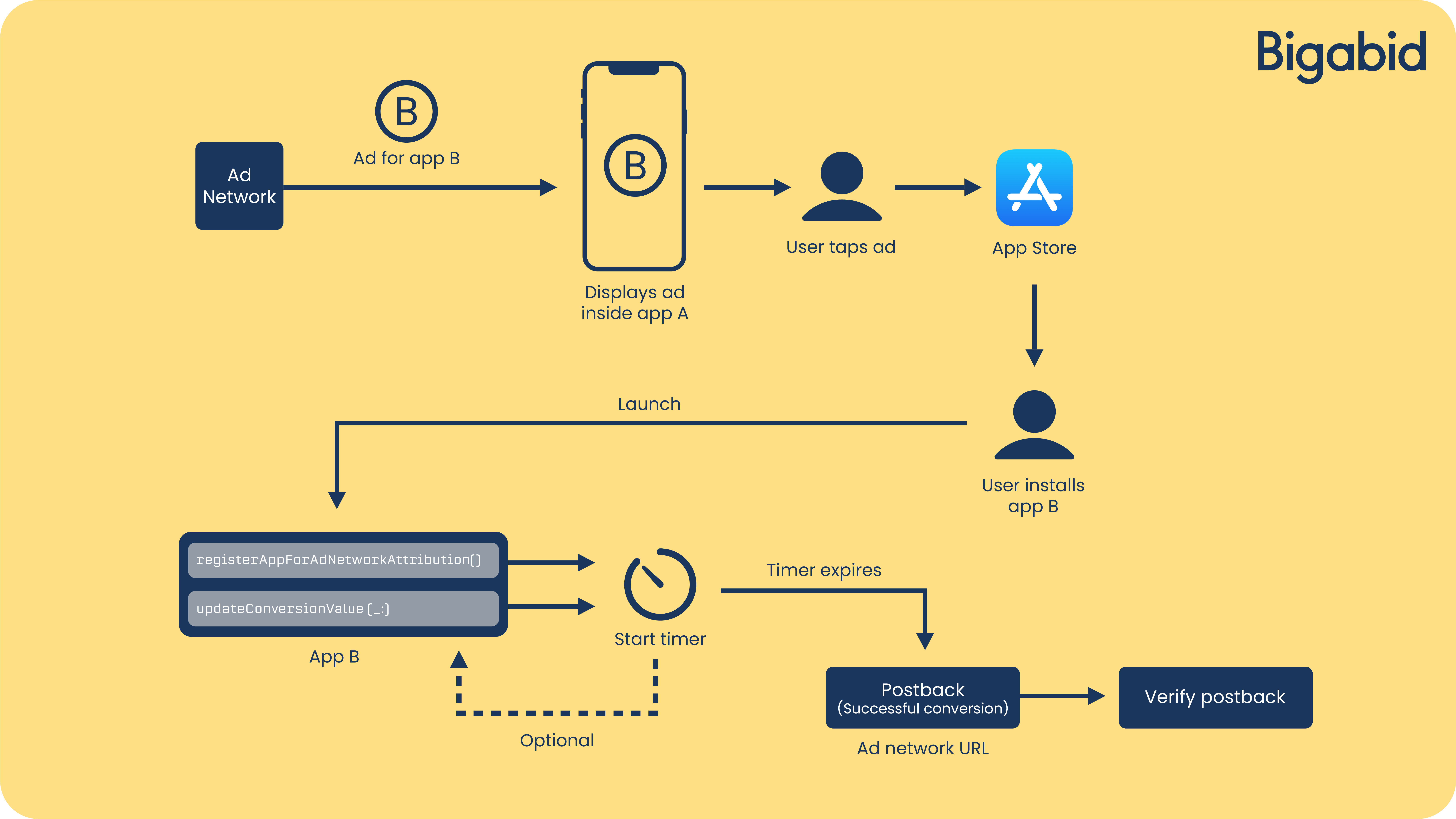Partnering with Privacy, MMPs, and iOS 15
By Product Manager, Yakir Zazon
“Bigabid has always supported privacy protection trends knowing that our technologies intrinsically hold the potential to ensure both accuracy and privacy at the same time.“
Partnering with Privacy, MMPs, and iOS 15

By Product Manager, Yakir Zazon
Ever since Apple’s ATT (App Tracking Transparency) privacy changes from iOS 14.5 had set the digital marketing world on fire, burning a significant portion of the platform’s personalized advertising market into ashes, App developers, publishers, and marketers have had a legitimate anti-competition grievance as Apple has been able to deliver its own form of personalized ads without the same limitations it put on third-party developers.
iOS 14.5 required app developers that track via IDFA (Identifier for Advertisers) to prompt the user for consent at the time of downloads and updates. This includes the caveat that developers cannot restrict users or limit the app if they opt out of app tracking. Conversely, Apple’s preloaded apps have not been subject to the same privacy restrictions.
With iOS 15, Apple has taken steps to address this complaint by announcing that Apple’s preloaded apps will now follow the same privacy conditions set by iOS 14.5 for third-party apps, where users are prompted for disabling app tracking.
It’s hard to say precisely why Apple has adopted its own “higher standards” regarding privacy and personalized ads now and not at first when iOS 14.5 was rolled out. Some argue it’s because Apple has had an extra share of recent antitrust scrutiny. They argue that Apple has only conceded to its own stringent limitations because of incidents like when France’s data privacy watchdog, the CNIL, filed complaints that Apple breached GDPR for tracking users within its own apps without asking for consent.
iOS 15’s new change is significant since it essentially eliminates app tracking from the entire Apple device ecosystem if a user chooses to do so with prompts that handle every instance of app tracking for all apps. But the critical question is – does eliminating app tracking eliminate targeting?
Bigabid’s answer to that question is a resounding “NO”. Our approach to Apple’s ATT rollout has and will always be one of boldly accepting the challenge. There have been many sweeping changes in our industry, and as a crucible, they have helped forge our technologies into something more robust and sophisticated.
In addition, Bigabid has always supported privacy protection trends knowing that our technologies intrinsically hold the potential to ensure both accuracy and privacy at the same time.
To read more about Bigabid’s commitment to privacy and transparency, check out Partnering with Transparency, by our CEO, Yaron Nahari.
Even though iOS 14.5 was only released early this year, here are some of the specific options for accurate targeting in a post-IDFA landscape.
Targeting on iOS has changed significantly since the release of iOS 14.5. It is clear that most users chose not to share their IDFAs (Identifier for advertisers). Opt-out rates remain to be seen for iOS 15, which included prompts for Apple’s preloaded apps, but overall we see a similar trend. Up to today, we have seen an average consent rate of about 30%. Therefore, Bigabid has focused on using these methodologies.
The main option to measure activity in iOS 14.5, 15, and beyond is to use a Mobile Measurement Partner (MMP) like Adjust and AppsFlyer.

Two elements that are noteworthy when working with an MMP are –
Probabilistic Attribution enables optimizing campaigns according to ROI and CPI, which brings better results for the activity. This is why most of Bigabid’s partners are using MMPs to measure their activities.
Discover more about Bigabid’s creative optimization methodologies in our insightful article, Creative Personalization.
Apple’s SKAdNetwork enables privacy-safe install attribution and measurement. A replacement API allows marketers to measure conversion rates of app install campaigns on mobile devices for iOS apps without passing along user-level data.
We think of it as a framework for privacy-preserving mobile install attribution. Though at the beginning of the road compared to other MMPs, which have far more advanced attribution mechanisms, it aims to help measure conversion rates of app install campaigns (CPI) without compromising the users’ identity.
To use a SKAdNetwork –
To start this measurement option, our partners share their conversion value mapping with Bigabid.

Bigabid’s best practice is to measure the activity by the MMP when our leading KPI metrics for the activity is ROI on a designated day, which can only be measured by the MMP. Then, according to the conversion rate and the app, we can scale aggressively after the second phase.
This is about the most amount of detail we can share until we start working together. But as you can see, Bigabid has uncovered viable options for accurately targeting on iOS 14.5, 15, and beyond, despite current app tracking regulations and trends. Though we are keenly aware that not all of Apple’s limited app tracking changes are there to protect their users’ privacy, our technologies and partnerships with MMPs have been developed and geared to do exactly that.
We look forward to helping you grow your app at scale on iOS and sharing more secrets about how our technologies are evolving in this ever-changing and exciting landscape.